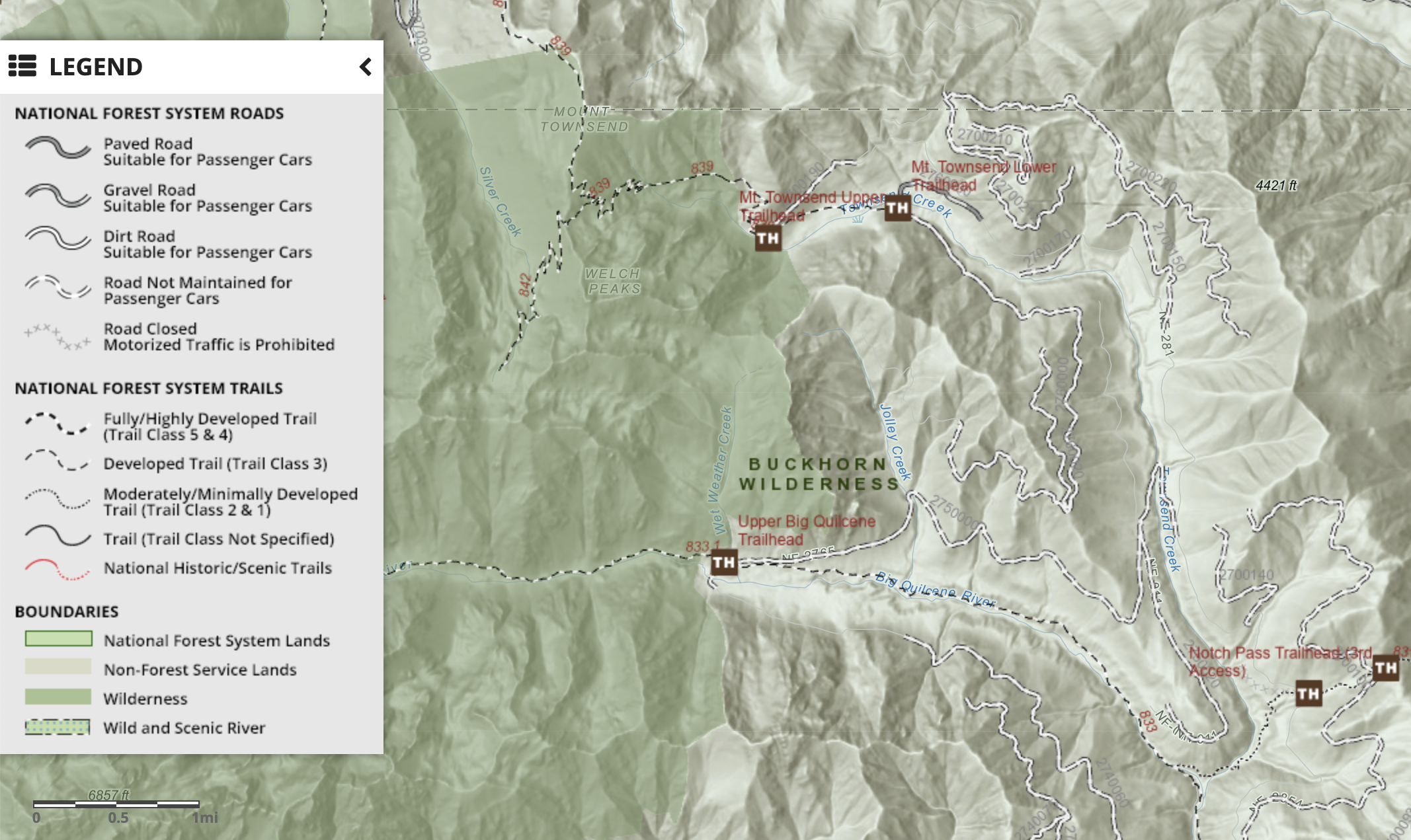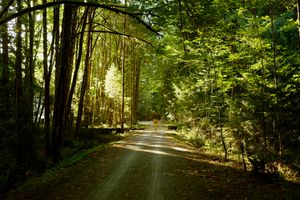I grew up in Southampton, New York, which has a population a little under 60,000 but swells to three or four times that on summer weekends. The town occupies 758 square kilometers of land – almost exactly the same as the five boroughs of New York City – and has about 725 kilometers of paved roadways.
New York City has a much larger population – about 8.5 million people live here, and on busy days the number of people in the city is probably in excess of ten million. But its road network is only thirteen times larger than Southampton’s; the NYC Department of Transportation manages about 10,000 kilometers of road. The US Interstate Highway system is another order of magnitude larger: It comprises around 75,000 kilometers of asphalt and concrete.
By contrast, there are roughly 600,000 kilometers of “inventoried” Forest Service roads in the US National Forest System – in addition to maybe 96,000 kilometers of roads “created by repeated public use, that are not managed or maintained by the agency or considered part of the forest road system.” Which is to say that there are the equivalent of roughly nine US Interstate Highway Systems, paved mostly in gravel, in our National Forests.

The Forest Service – a branch of the Department of Agriculture whose original purpose was to “furnish a continuous supply of timber for the use and necessities of the people of the United States” – classifies their roads into five buckets based on their method of construction and maintenance needs. And the agency seems to be highly tuned to the lifecycle of their road infrastructure, and the fact that it is considerably shorter than the ecosystems it provides access to. Roads are built, used, “put into storage,” and decommissioned; the forest lives on.
Read the full story
The rest of this post is for paid members only. Sign up now to read the full post — and all of Scope of Work’s other paid posts.
Sign up now


